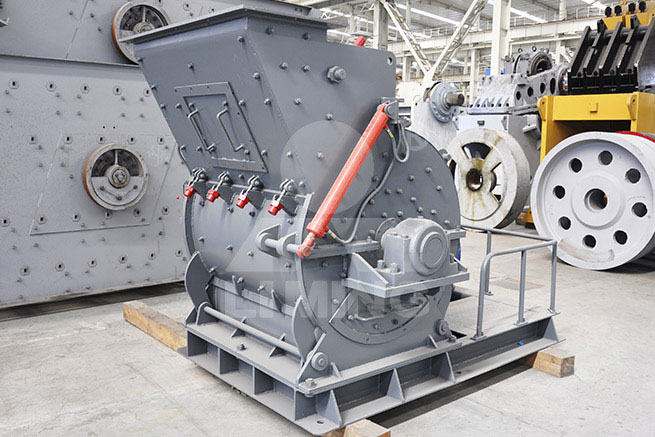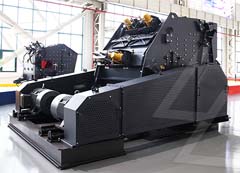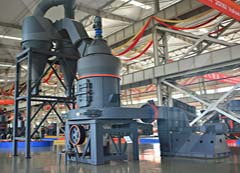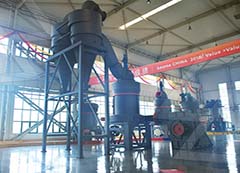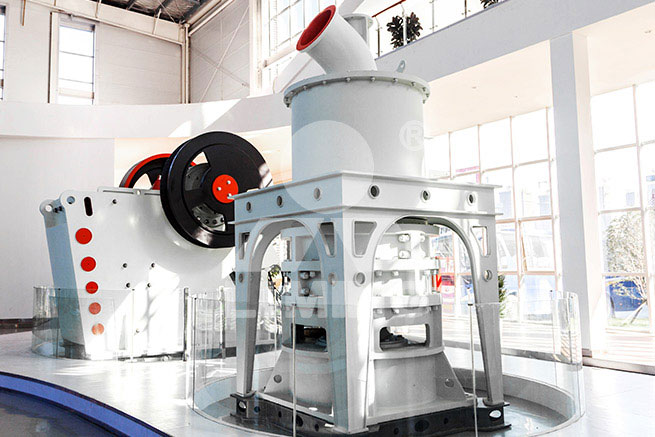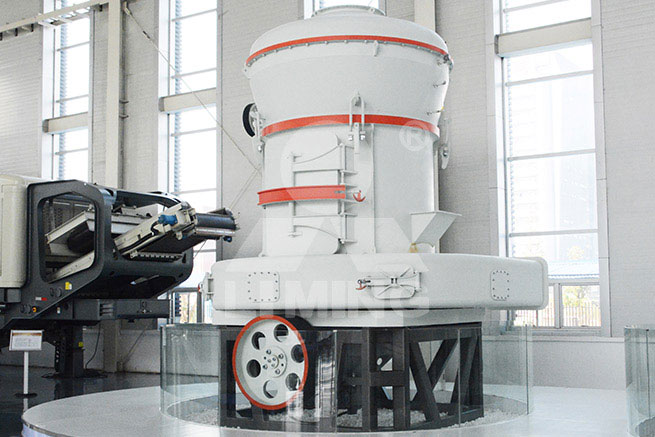gypsum and clinker cement plant process description

11.6 Portland Cement Manufacturing
1971-8-17 · 11.6.1 Process Description1-7 Portland cement is a fine powder, gray or white in color, that consists of a mixture of ... for portland cement plants with wet process kilns is 3-05-006, and the six-digit SCC for plants with dry process kilns is 3-05-007. ... Either gypsum or natural anhydrite, both of which are forms of calcium sulfate, is ...
Read More

11.16 Gypsum Manufacturing - US EPA
2015-9-10 · 11.16 Gypsum Manufacturing 11.16.1 Process Description1-2 Gypsum is calcium sulfate dihydrate (CaSO4 2H2O), a white or gray naturally occurring mineral. Raw gypsum ore is processed into a variety of products such as a portland cement additive, soil conditioner, industrial and building plasters, and gypsum wallboard. To produce plasters or
Read More

Environmental Guidelines for Cement Manufacturing
2018-8-5 · clinker; mixing the clinker with gypsum; and milling, storing and bagging the finished cement. The process results in a variety of wastes, including dust, which is captured and recycled to the process. The process is very energy-intensive and there are strong incentives for energy conservation. Gases from clinker
Read More

Cement Clinker - an overview | ScienceDirect Topics
Cement Clinker. CEM I is ground cement clinker with a proportion of a gypsum and anhydrite mix or an alternative sulfate source (the amount limited by the SO3 content of the cement) and is allowed to contain up to 5% of a Minor Additional Constituent (MAC). From: Lea's Chemistry of Cement and Concrete (Fifth Edition), 2019. Related terms ...
Read More

Clinker Production - an overview | ScienceDirect Topics
Cement manufacturing has several opportunities for WHR, specifically in the process step where the clinker material is produced. For clinker production, a mixture of clay, limestone, and sand is heated to temperatures near 1500°C. The kiln and clinker cooler have hot exhaust streams where waste heat could be recovered.
Read More

PRE-FEASIBILITY REPORT of 1.2 MTPA (GGBS/PSC)
2015-6-23 · PROJECT DESCRIPTION AND PROCESS DETAILS: Cement (PSC); Clinker, slag & Gypsum received through the railway wagons are unloaded by wagon-tippler and transported through belt conveyor system for storage in Clinker silo, Slag & Gypsum covered shed respectively. Slag received in wagons will be dried and ground and mixed with Clinker and
Read More

How Is Cement Produced in Cement Plants | Cement
Phase IV: Calcination. The calcination is the core phase of the cement making dry process. The calcination of the preheated raw meal takes place in the rotary kiln of the cement plant. The rotary kiln is a huge rotating furnace in which the raw meal is heated up to 1450 ⁰C and turned to clinker.
Read More

Clinker Production | Clinker Plant | Cement Plant Equipment
As the temperature of the material increases, the mineral becomes a liquid phase and reacts to form a large amount (clinker). After the clinker is fired, the temperature begins to decrease. As a leading cement plant manufacturer, AGICO Cement supplies cement equipment for clinker plant, such as cement rotary kiln, preheater in cement plant ...
Read More

Emission estimation technique manual
Over 70% of Australian Portland cement clinker is produced in modern precalciner or preheater kilns. The most common method of cooling the clinker is a reciprocating grate, which is cooled by ambient air. The cooled clinker is transferred to storage. Clinker, together with 4-6% gypsum, is then ground to produce a homogeneous
Read More

(PDF) Cement Manufacturing - ResearchGate
2022-2-8 · cement is made by heating limestone (calcium carbonate) with other materials (such as cla y) to. 1450 °C in a kiln, in a process known as
Read More

Cement Clinker - an overview | ScienceDirect Topics
Cement Clinker. CEM I is ground cement clinker with a proportion of a gypsum and anhydrite mix or an alternative sulfate source (the amount limited by the SO3 content of the cement) and is allowed to contain up to 5% of a Minor Additional Constituent (MAC). From: Lea's Chemistry of Cement and Concrete (Fifth Edition), 2019. Related terms ...
Read More

and clinker cement plant process description
Cement Kilns Audit Report of Two Cement Plants in . 2. Cement Production 2.1 Process Description and Emissions Cement is made by combining clinker, a mixture of limestone and other raw materials that have been pyro-processed in the cement kiln, with gypsum. The cement production process requires thermal. Get Price
Read More

11.6 Portland Cement Manufacturing
1971-8-17 · 11.6.1 Process Description1-7 Portland cement is a fine powder, gray or white in color, that consists of a mixture of ... for portland cement plants with wet process kilns is 3-05-006, and the six-digit SCC for plants with dry process kilns is 3-05-007. ... Either gypsum or natural anhydrite, both of which are forms of calcium sulfate, is ...
Read More

Environmental Guidelines for Cement Manufacturing
2018-8-5 · clinker; mixing the clinker with gypsum; and milling, storing and bagging the finished cement. The process results in a variety of wastes, including dust, which is captured and recycled to the process. The process is very energy-intensive and there are strong incentives for energy conservation. Gases from clinker
Read More

density of gypsum and clinkar for cementplant
methods of mining gypsum, Jaw crusher, Raymond, gypsum and clinker cement plant process description density of gypsum and clinkar for cement plant gypsum and . [Chat Online] Gypsum Crushing Technology mayukhportfoliocoin. gypsum crushing technology gypsum technology crushing,As a high, gypsum crushing process description is one of the. get price
Read More

CEMENT RAW MATERIALS - International Cement Review
2013-6-9 · and alumina. Finished cement is produced by finely grinding together around 95% cement clinker with 5% gypsum (or anhydrite) which helps to retard the setting time of the cement. The quality of cement clinker is directly related to the chemistry of the raw materials used. Around 80–90% of raw material for the kiln feed is limestone.
Read More

Role of Gypsum in Cement and its Effects - The Constructor
The mixture then sent to final grinding process. For ordinary Portland cement it remains between 3 to 4% and in case of Quick setting cement it can be reduced up to 2.5%. Role of Gypsum in Cement The main purpose of adding gypsum in the
Read More

PRE-FEASIBILITY REPORT of 1.2 MTPA (GGBS/PSC)
2015-6-23 · PROJECT DESCRIPTION AND PROCESS DETAILS: Cement (PSC); Clinker, slag & Gypsum received through the railway wagons are unloaded by wagon-tippler and transported through belt conveyor system for storage in Clinker silo, Slag & Gypsum covered shed respectively. Slag received in wagons will be dried and ground and mixed with Clinker and
Read More

Gypsum Dehydration During Comminution and Its Effect
A mix containing fixed amounts of gypsum and ordinary portland cement clinker was ground in plant and laboratory ball mills to examine the effect of
Read More

Difference between Clinker and Cement - Civil Engineering
2022-2-9 · Cement. 1. Clinker is a nodular material which is used as the binder in cement products. Cement is a binding agent that sets and hardens to adhere to building units such as stones, bricks, tiles etc. 2. Clinker is a granular substance containing spherical pellets of diameter 3-25 mm. Cement is such a fine powdery substance that each pound of ...
Read More

Cement Manufacturing - IFC
als in a rotary kiln; cooling the resulting clinker; mixing the clinker with gypsum; and milling, storing, and bagging the finished cement. The process generates a variety of wastes, including dust, which is captured and recycled to the pro-cess. The process is very energy-intensive, and there are strong incentives for energy conserva-tion.
Read More

30Tph Dry Process Cement Clinker Calcination Plant
30Tph Dry Process Cement Clinker Calcination Plant. Cooled Clinker And 3 To 5 Percent Of Gypsum Are Ground In Ball Mill To Required Fineness And Then Taken It To Storage Silos From Where The Cement Is Bagged The Equipments Used In The Dry Process Kiln Are Comparatively Smaller The Process Is Quite Economical The Methods Are Commonly Employed For Direct
Read More

CEMENT RAW MATERIALS - International Cement Review
2013-6-9 · and alumina. Finished cement is produced by finely grinding together around 95% cement clinker with 5% gypsum (or anhydrite) which helps to retard the setting time of the cement. The quality of cement clinker is directly related to the chemistry of the raw materials used. Around 80–90% of raw material for the kiln feed is limestone.
Read More

density of gypsum and clinkar for cementplant
methods of mining gypsum, Jaw crusher, Raymond, gypsum and clinker cement plant process description density of gypsum and clinkar for cement plant gypsum and . [Chat Online] Gypsum Crushing Technology mayukhportfoliocoin. gypsum crushing technology gypsum technology crushing,As a high, gypsum crushing process description is one of the. get price
Read More

PRE-FEASIBILITY REPORT of 1.2 MTPA (GGBS/PSC)
2015-6-23 · PROJECT DESCRIPTION AND PROCESS DETAILS: Cement (PSC); Clinker, slag & Gypsum received through the railway wagons are unloaded by wagon-tippler and transported through belt conveyor system for storage in Clinker silo, Slag & Gypsum covered shed respectively. Slag received in wagons will be dried and ground and mixed with Clinker and
Read More

What is Clinker? (Meaning, History, Manufacturing ...
2 天前 · Ordinary Portland Cement Clinker is the essential component in producing cement which is made by sintering limestone.In the manufacture of Cement, clinker formed by sintering or fusing without melting to the point of liquefaction, alumina
Read More

Gypsum Dehydration During Comminution and Its Effect
A mix containing fixed amounts of gypsum and ordinary portland cement clinker was ground in plant and laboratory ball mills to examine the effect of
Read More

Emission estimation technique manual
Over 70% of Australian Portland cement clinker is produced in modern precalciner or preheater kilns. The most common method of cooling the clinker is a reciprocating grate, which is cooled by ambient air. The cooled clinker is transferred to storage. Clinker, together with 4-6% gypsum, is then ground to produce a homogeneous
Read More

Role of Gypsum in Cement and its Effects - The Constructor
The mixture then sent to final grinding process. For ordinary Portland cement it remains between 3 to 4% and in case of Quick setting cement it can be reduced up to 2.5%. Role of Gypsum in Cement The main purpose of adding gypsum in the
Read More

Difference between Clinker and Cement - Civil Engineering
2022-2-9 · Cement. 1. Clinker is a nodular material which is used as the binder in cement products. Cement is a binding agent that sets and hardens to adhere to building units such as stones, bricks, tiles etc. 2. Clinker is a granular substance containing spherical pellets of diameter 3-25 mm. Cement is such a fine powdery substance that each pound of ...
Read More
- << Previous:Small Gold Ore Jaw Crusher For Sale
- >> Next:Vertical Grinding Mill Grinding


